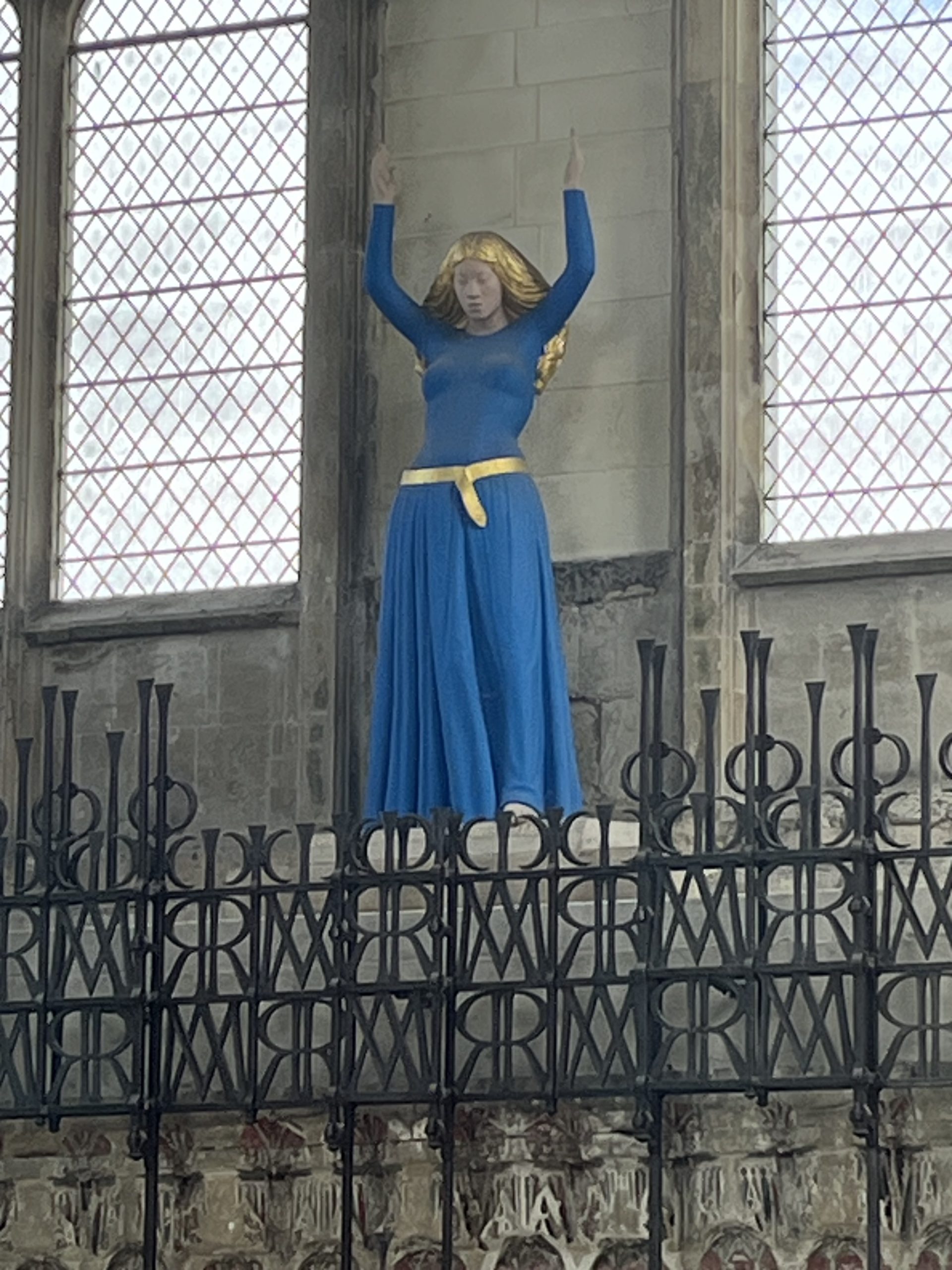Title of Art: The Blessed Virgin Mary
Ritual Pose/Object: orans pose
Artist: David Wynne
Art Form: Sculpture
Date of Composition: 2000
Event: Annunciation
Inscription Text: "I am the Lord's servant. Let it be according to your word."
Exhibit Institution: Ely Cathedral, Lady Chapel
Exhibit Location: Ely, Cambridgeshire, England
VM Image #: 0115
Photographer: Josephine Stringer
Date of Photograph: July 19, 2023

A modern sculpture by the English artist, David Wynne. The stone sculpture depicts Mary's response to the angel's message that she would carry the Son of the Most High in her womb. Mary, typically clothed in a more demure "marian blue" is dressed in bright blue with a golden sash drawing attention to the body of a pregnant woman.
David Wynne's art often invites controversial reactions and this image of Mary is no exception. Housed in the Lady Chapel of the Ely Cathedral, Mary's golden hair and belt, as well as her bright blue attire, stand in stark contrast to the cold, gray stone of the chamber. Mary is placed at the east end of the chapel, centered above the altar, with her arms raised in a pose of celebration. The golden hair and belt are often considered garish, but the majority of the controversy relates to her figure and posture. The breasts and hips are prominent, with the belt resting just over her womb. While the stance deviates from other artwork of the young Mary, humbleness can still be seen in her bowed head and closed eyes. Furthermore, the power of her affirmative response can be felt in the total surrender of the physicality of her body, a body prepared to carry and nurse a baby.
The sculpture also invites reflection on Mary’s ancestor, Miriam. Over a millenia before Mary’s song of praise, Miriam lifted her arms as she led hundreds of thousands in worship in the first liturgy of liberation, the Song of the Sea, recorded in Exodus chapter 15. Mary’s voice echoes her sister Miriam, and one may imagine Mary participating in the ancient Jewish custom of dancing to worship a God whose strong arm scatters the proud and uplifts the lowly.
The sculpture also invites reflection on Mary’s ancestor, Miriam. Over a millenia before Mary’s song of praise, Miriam lifted her arms as she led hundreds of thousands in worship in the first liturgy of liberation, the Song of the Sea, recorded in Exodus chapter 15. Mary’s voice echoes her sister Miriam, and one may imagine Mary participating in the ancient Jewish custom of dancing to worship a God whose strong arm scatters the proud and uplifts the lowly.
